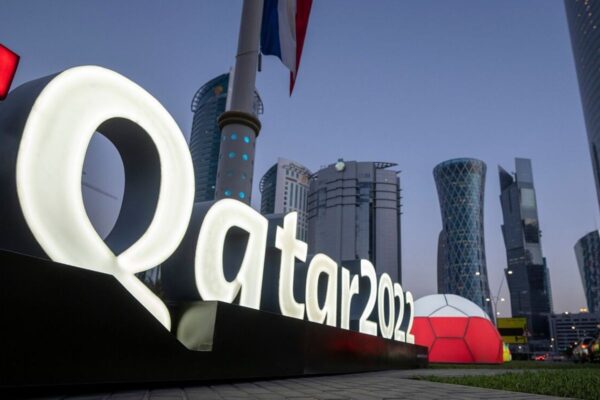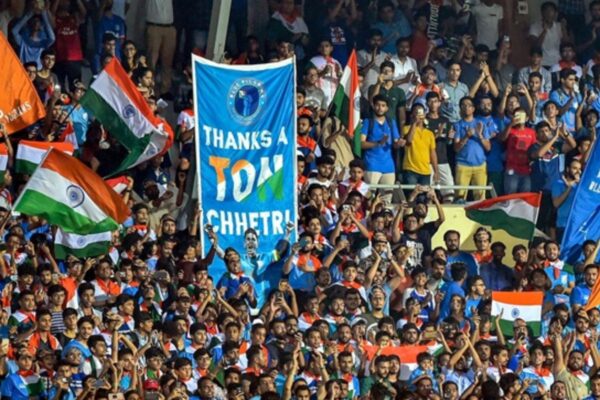The effect of football on India’s expanding sports tourism market

The effect of football on India’s expanding sports tourism market
Although many are anticipated to attend Qatar 2022, their squad has never competed in a World Cup for football. Indian fans bought more than 23,500 of the 1.8 million tickets for the Qatar World Cup 2022 that were bought across the first two phases.
India came in eighth in terms of ticket sales after the first round of ticketing. In Russia 2018, there were about 18,000 Indian supporters there. Out of all non-competing nations, India has the third-highest number of fans in Russia, only behind the US and China. gopoker.global GGpoker Welcome Offer
What then motivates the nation’s fans to flock in such large numbers to the biggest athletic event in the world when its men’s and women’s teams are both ranked 104th and 58th, respectively, and have never participated in the World Cup?
Sunil Chhetri, the men’s national team captain, had to post a video to the Indian Football Squad Twitter account pleading with fans to see the team’s Asian Cup qualifiers in Kolkata in June of this year to best illustrate the strange contradiction.
It has a pitiful character that one of the best athletes in the country, a guy who is third among active international goal scorers, is pleading with people to watch live games to support his team.
Although the film achieved its goal of selling out venues, it is indicative of the status of Indian football.
The All India Football Federation (AIFFfinancing )’s was said to have been cut by 85% in May of this year. FIFA briefly suspended India last month due to outside meddling.
The funding drop was attributed to the men’s team’s subpar play, the women’s game’s lack of structure, and insufficient grassroots growth.
160 million football enthusiasts in India

In January this year, a YouGov survey performed on behalf of the Indian Super League club FC Goa found that there are 160 million football enthusiasts in India. There is a passion for the sport; the question is exactly how it is being expressed.
Debanjan Banerjee, a scholar who specialises in football culture and behaviour, said that the issue is how Indian football supporters are divided according to the type of identity they hold.
“Because there are significantly fewer Indian football followers than there are in Europe, the world is misled into believing that India lacks football enthusiasts.
Banerjee has a thorough awareness of the attitudes and behaviours regarding the national teams being one of the primary members of the Blue Pilgrims, a group of fans that follow the Indian men’s and women’s football teams at every game.
Banerjee contends that India’s lack of success on the international scene has made it difficult for fans to identify with the squad at a time when football has become a “global identity for the youth.”
“To express themselves in a way they feel is broader than themselves and also ties them to something more successful and beneficial, individuals support football clubs or travel for the sport, he said.
This results in the phenomenon of identity theft among fans.
Banerjee spent the 2018 World Cup filming a documentary about Kerala’s relationship to football in southern India.
He vividly portrayed the tournament’s intensity and the ardent support for Brazil and Argentina in it. These nations’ fan organisations functioned like political parties, with distinct “offices” where fans gathered to watch games together.
A staging committee is seen creating player cutouts alongside massive murals that reach heights of up to 50 feet (15 metres) along the streets.
These fandoms have intense rivalries and are always looking to outdo one another. A brawl between the groups breaks out in the middle of the night in one of the documentary sequences, and the church parish has to break it up. Brazil and Argentina are my favourites.
One such ardent supporter of Argentina from Kerala is Rakesh Pai. Pai, an employee of an investment firm in Bangalore, was similarly enamoured by Diego Maradona and the Albiceleste as the majority of people were.
His first experience with the World Cup was in 1990 when he was seven years old. He will always remember Maradona crying during the championship game.
Although Pai had no idea who he was, his suffering touched him. This heartache led to a romantic relationship.
As the years went by, his enthusiasm grew, and in 2010, he and his brother took a plane to South Africa to see Argentina live for the first time.
Pai was captivated by the experience despite Argentina’s terrible performance in the tournament. Pai visited Brazil in 2014 along with his wife and brother. To converse with other Argentine fans, he and his brother also learnt Spanish. The 2018 World Cup in Russia renewed these connections.
Pai, who will be attending his fourth World Cup in Qatar in 2022, mentioned getting numerous calls from friends and acquaintances with inquiries regarding ticket availability and costs.

Some of these people, he said, aren’t even die-hard football fans. In addition to Qatar’s proximity to India, Pai thinks that deterring travellers from visiting other distant nations is the perception that it is difficult to get a visa.
There have never been any issues with visas during any of these World Cups. Although I had challenges in South Africa and Brazil as a result of communication problems, obtaining a visa never presented a challenge, he claimed. “But at the time, we [Pai and his brother] were unaware of that. Oh, the process is so straightforward, we only realised it after receiving the visa.
It is impossible to ignore the Middle East’s comfort factor.
More than 750,000 Indians live in Qatar, making up around 25% of the total population.
There is a good chance that you know someone who lives in Qatar, and in addition to offering a place to stay, they may be able to assist you in getting match tickets.
Tickets for this category start at 40 riyals ($11 or 876 Indian rupees), and residents of Qatar are permitted to bring guests who are not residents.
For visiting fans, the proximity of the stadiums is also advantageous. Rakesh Haridas, a devoted follower of Bengaluru FC and co-founder of the legendary West Block Blues supporters club, is not very interested in going to the 2022 World Cup, nevertheless, and this is among the causes.
“I don’t find Qatar 2022 exciting. To experience a country in its true form, one attends a World Cup. Russia had two matches, one in Moscow and one in Sochi. We are aware of the World Cup’s overall setup, the speaker continued.
Haridas is aware that the players, not the locations, are what draw fans to Qatar.
“A noteworthy element is that fading era of some of the best football talents. The first explanation is that you have been keeping an eye on these individuals for the previous 12 to 15 years. Furthermore, he said, watching Messi play in Qatar is much easier than in Paris.
This World Cup’s status as something off the bucket list is what attracts corporations to it.
“Pinnacle of luxury” bundles
Raj Khandwala, the CEO of the sports management and travel company Cutting Edge based in Mumbai, spoke about how typical corporate social events like sightseeing and clubbing have become monotonous.
“Today, corporations seek to create experiences for their personnel, clients, and customers. They want to show them an F1 race, a Wimbledon match, or the World Cup of football. Something that gives them a new experience” added Khandwala.
Khandwala predicted that the hospitality ticket sales in India for this year’s World Cup could total anywhere between $20 and $25 million. Khandwala is the joint-exclusive sales agent for match hospitality in India.
Nearly 75% of Cutting Edge’s World Cup sales come from corporations. According to their brochure, the packages vary from the “pinnacle of luxury” to the “genuine fan experience.” Private dining experiences, six-course dinners prepared by live chefs, champagne options, extended service, ideal match views, and preferred parking are just a few of the inclusions in the packages.

The cheapest match ticket offered by Cutting Edge is priced at $950, while a two-night hotel package would cost you between $500 and $800. Khandwala anticipates that by the time the event starts, the company would have handled the ticketing for 5,500 Indian fans, up from the present total of more than 4,000.
With numerous new players entering the market recently, sports tourism has developed into a lucrative industry.
DreamSetGo, a business that promises to merge sports and upscale travel, was founded in 2019 by renowned Indian fantasy sports company Dream11.
Bharat Army Travel & Tours, the well-known organisation of Indian cricket fans who follow their team in big numbers around the world, was established in 2015.
Additionally, travel agencies like Thomas Cook and Cox & Kings have increased their operations in this area.
“It’s expanding. The scenery is bizarre. Everyone wants to participate in sports and experience new things, thus sports tourism will be the largest thing to come to India, according to Khandwala.
The statistics support his enthusiasm. Adventure and experiential tourism are predicted to increase at a compared annual growth rate of 17.4% from 2017 to 2023, according to a Thrillophilia report.
This expansion is also being driven by a change in perspective. The largest generation in the nation is made up of millennials, who place a high value on experiences and are prepared to spend money on them. A 2019 Deloitte study revealed that travelling and experiencing the world were the aspirations of 57% of millennials and a similar percentage of Gen Z in the nation. India might not be at the World Cup this year, but Indians will still be visible in the crowd.
edited and proofread by nikita sharma




